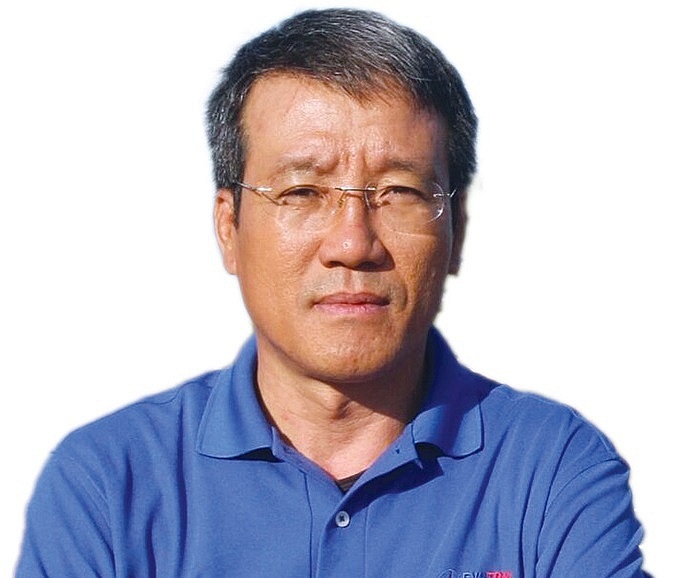Evaluating a complex year in wind energy and determining what comes next
 |
| By Bui Van Thinh - Chairman Binh Thuan Wind Power Association |
The extension of the deadline allowing wind power investors to continue enjoying a favourable feed-in tariff (FiT) is still considered by relevant management authorities, with a final decision outstanding.
Looking back into 2021, albeit it was such a turbulent year, Vietnam still appeared as a bright spot in the region and world for wind power development, with nearly 4,000MW of added capacity coming into stream, buoyed by state-of-the-art technologies and some of the world’s leading experts. This came even though lockdown measures, and inconsistent law enforcement by localities, had posed mounting hardships to wind power projects’ execution.
Racing to reach project completion and meet the FiT deadline on October 31 was left with myriad consequences, sometimes tragic repercussions. Incidents in transportation, installation, and even general operations had been taking place more frequently.
There were land disputes, overstated compensation costs, and conflicts between residents and businesses. Moreover, capacities are still being slashed. While in the past, this was mostly due transmission network overload, 2021 also saw a lack in load capacity.
With the total proposed capacity of renewable energy of 24,000MW, if this was to be abated 10 per cent per year on average, we would lose around $520 million, averaging $21,740 per MW in the investment capital volume.
The current buying price for renewable energy and the selling price of state-owned power authority Electricity of Vietnam (EVN) are yet to come on par with the market mechanism, leading to a bigger volume of renewable energy being bought and higher losses for EVN. This has, in turn, badly affected EVN’s ability to improve the national power grid to absorb more renewable energy, and further impasses the sector’s development.
The inspiring source of motivation for renewable energy development is the strong commitment of the state at COP26 towards reaching net-zero by 2050. Experts assumed that it would be a painstaking path towards reaching this target and that a clear roadmap must be crafted right from the get-go.
In light of the latest draft for the Power Development Plan VIII (PDP8), the offshore wind power capacity scenario for 2030 is revised to 5,000MW initially after COP26, which might further go up at the time of approval.
Many coastal localities have been racing to register for offshore wind power projects with a total capacity surpassing 100GW, promising a vibrant market ahead.
For the wind power to develop up to its full potential and reaching the set medium and long-term targets, it is crucial to have clear policy orientations referring to what would be the suitable FiT level applicable to wind power projects.
As renewable energy development cannot be separate from smart grid network and regional alliances, this requires a colossal investment volume. This sparks questions about the upcoming PDP8, grid connection fees, and the participation of private investors in power grid investment.
Moreover, EVN’s power selling price should be adjusted, allowing the unit to buy more renewable energy while not incurring more losses.
Finally, it is important to pilot offshore wind projects, gearing towards gradual policy perfection to best avail of this valuable natural power source. In this case, we might investigate a successful instance in Taiwan. The 2021 dream still holds on in 2022 – that is Vietnam would not continue slashing wind power projects’ capacity for the sake of clean power source development.
What the stars mean:
★ Poor ★ ★ Promising ★★★ Good ★★★★ Very good ★★★★★ Exceptional
Related Contents
Latest News
More News
- Vietnam’s forest carbon credits draw global interest (December 05, 2025 | 17:41)
- Coro Energy to launch BESS Pilot in Vietnam (December 04, 2025 | 15:12)
- Vietnam strengthens energy storage pathway (December 04, 2025 | 15:05)
- Women take leading role in agriculture and food systems (December 03, 2025 | 19:04)
- Experts highlight unpaid care work as key barrier to gender equality (December 03, 2025 | 15:15)
- Vietnam sets pace for dual transition in industry and trade (December 03, 2025 | 14:12)
- Harnessing technology for a sustainable future in Vietnam (December 03, 2025 | 12:17)
- Sustainability efforts on right track through policy and tech (December 03, 2025 | 12:05)
- Hanoi symposium highlights gender equality research and policy (December 03, 2025 | 12:00)
- The march to productivity and environmental sustainability (December 03, 2025 | 09:17)

 Tag:
Tag:






















 Mobile Version
Mobile Version